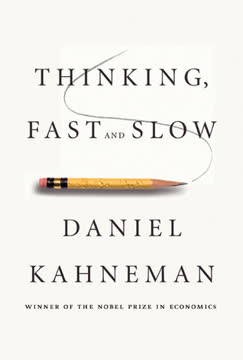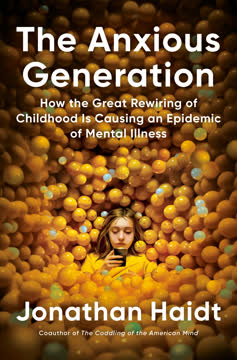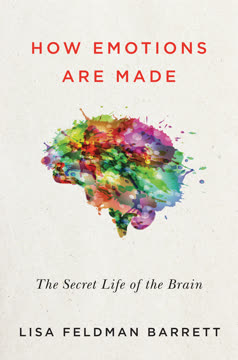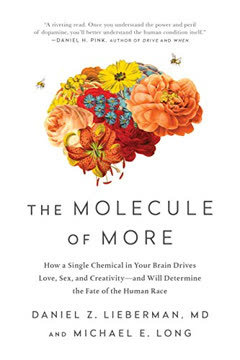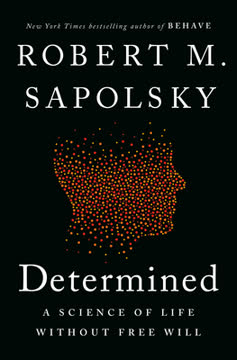النقاط الرئيسية
1. السلوك يتشكل من خلال تفاعلات معقدة بين الجينات والبيئة والثقافة
الجينات ليست عوامل مستقلة تتحكم في الأحداث البيولوجية.
التأثير الجيني معقد. رغم أن الجينات تلعب دورًا في السلوك، إلا أن تأثيرها غالبًا ما يكون ضئيلًا ويعتمد بشكل كبير على العوامل البيئية. التفاعلات بين الجينات والبيئة تعني أن نفس الجين قد يظهر تأثيرات مختلفة في سياقات مختلفة. على سبيل المثال:
- جين MAOA، الذي أُطلق عليه سابقًا "جين المحارب"، يزيد العدوانية فقط لدى الأفراد الذين تعرضوا لسوء المعاملة في الطفولة.
- جين DRD4، المرتبط بالبحث عن الجديد، يظهر تأثيرات مختلفة حسب السياق الثقافي.
العوامل الثقافية حاسمة. الثقافة تشكل كيفية تعبير الجينات وكيف تؤثر العوامل البيئية على السلوك. من بين التأثيرات الثقافية الرئيسية:
- التوجهات الجماعية مقابل الفردية
- التفاوت الاجتماعي والاقتصادي
- المعتقدات الدينية والأيديولوجية
- التجارب التاريخية للصراع أو التعاون
2. بنية الدماغ ووظيفته تتطور طوال الحياة، مما يؤثر على السلوك
الأهم أن المنطقة الدماغية الأخيرة التي تنضج بالكامل (من حيث عدد المشابك العصبية، والتغليف المياليني، والتمثيل الغذائي) هي القشرة الجبهية، التي لا تكتمل نضجها إلا في منتصف العشرينات.
اللدونة العصبية مستمرة. يستمر الدماغ في التغير والتكيف طوال الحياة استجابةً للتجارب والمدخلات البيئية. من الجوانب الرئيسية لللدونة العصبية:
- تقليم وتقوية المشابك العصبية
- تكوين خلايا عصبية جديدة (تكوين الأعصاب) في مناطق معينة من الدماغ
- تغييرات في التغليف المياليني تؤثر على سرعة نقل الإشارات
فترات حرجة موجودة. هناك نوافذ تطورية مهمة تشكل بنية الدماغ ووظيفته:
- الطفولة المبكرة: تكوين سريع للمشابك العصبية وتقليمها
- المراهقة: نضج القشرة الجبهية وأنظمة تنظيم العواطف
- البلوغ: استمرار اللدونة ولكن بمعدل أبطأ مقارنة بالفترات السابقة
3. الهرمونات تلعب دورًا دقيقًا في تشكيل السلوك الاجتماعي والعدواني
التستوستيرون يجعلنا أكثر استعدادًا لفعل ما يلزم للحفاظ على المكانة.
السياق هو الأساس. الهرمونات مثل التستوستيرون والأوكسيتوسين لا تؤثر على السلوك بشكل بسيط أو موحد. تأثيرها يعتمد على السياق الاجتماعي والفروق الفردية:
- التستوستيرون يمكن أن يزيد السلوك الاجتماعي الإيجابي إذا كان ذلك ضروريًا لكسب المكانة
- الأوكسيتوسين يعزز الترابط داخل المجموعة لكنه قد يزيد العداء تجاه الخارجين عن المجموعة
العلاقة بين الهرمونات والسلوك ثنائية الاتجاه. السلوك يمكن أن يؤثر على مستويات الهرمونات كما تؤثر الهرمونات على السلوك:
- الفوز في مسابقة يزيد من مستويات التستوستيرون
- الترابط الاجتماعي يزيد من مستويات الأوكسيتوسين
4. تجارب الطفولة تترك آثارًا دائمة على سلوك ووظيفة الدماغ في البلوغ
الصعوبات في الطفولة تزيد من احتمالية تعرض البالغين لـ(أ) الاكتئاب والقلق وتعاطي المخدرات؛ (ب) ضعف القدرات المعرفية، خاصة المتعلقة بوظائف القشرة الجبهية؛ (ج) ضعف السيطرة على الاندفاع وتنظيم العواطف؛ (د) السلوك المعادي للمجتمع، بما في ذلك العنف؛ و(هـ) علاقات تعيد إنتاج صعوبات الطفولة (مثل البقاء مع شريك مسيء).
الضغط المبكر له تأثيرات طويلة الأمد. الصعوبات في الطفولة قد تؤدي إلى تغييرات دائمة في بنية الدماغ ووظيفته:
- ارتفاع هرمونات التوتر يؤثر على تطور الحُصين والقشرة الجبهية
- تغيرات في معالجة العواطف في اللوزة الدماغية
التجارب الإيجابية مهمة أيضًا. البيئات الداعمة والمغذية في الطفولة تعزز نمو الدماغ الصحي والمرونة:
- الارتباط الآمن يعزز تنظيم العواطف بشكل أفضل
- البيئات الغنية والمنشطة تحسن التطور المعرفي
5. المراهقة فترة حرجة لتطور الدماغ وأنماط السلوك
إذا كانت أنظمة الجهاز الحوفي، والجهاز العصبي الذاتي، والغدد الصماء تعمل بكامل طاقتها في المراهقة بينما لا تزال القشرة الجبهية تعمل على تعليمات التجميع، فقد شرحنا لماذا يكون المراهقون محبطين، رائعين، أحمق، مندفعين، ملهمين، مدمرين، مدمّرين لأنفسهم، غير أنانيين، أنانيين، مستحيلين، ومغيرين للعالم.
نضج القشرة الجبهية أمر حاسم. التطور المتأخر للقشرة الجبهية مقارنة بمناطق الدماغ الأخرى يفسر العديد من سلوكيات المراهقين:
- زيادة المخاطرة والبحث عن الإثارة
- ارتفاع ردود الفعل العاطفية
- صعوبة في السيطرة على الاندفاع والتخطيط طويل الأمد
تأثير الأقران في ذروته. المراهقون حساسون بشكل خاص للتأثير الاجتماعي:
- زيادة الحساسية للرفض الاجتماعي
- رغبة قوية في قبول الأقران
- زيادة المخاطرة في وجود الأقران
6. الاختلافات الثقافية تؤثر بشكل كبير على السلوك، والإدراك، والمعايير الاجتماعية
تأثير الثقافة هائل.
الإدراك والمعرفة تختلف. الثقافات المختلفة تشكل كيفية معالجة المعلومات ورؤية العالم:
- الثقافات الفردية تركز على الأشياء المركزية في المشاهد البصرية
- الثقافات الجماعية تولي اهتمامًا أكبر للسياق المحيط
السلوك الاجتماعي يتأثر بالثقافة. المعايير الثقافية تشكل التفاعلات الشخصية والأحكام الأخلاقية:
- مفاهيم العدالة والإنصاف تختلف بين الثقافات
- التعبير العاطفي وتنظيمه يختلفان
التطور الثقافي مستمر. الثقافات تستمر في التغير والتكيف:
- العولمة تؤدي إلى اختلاط الثقافات وظهور ثقافات هجينة
- التغيرات التكنولوجية تخلق ممارسات ومعايير ثقافية جديدة
7. التطور شكل السلوك البشري، لكننا غالبًا ما ننحرف عن التوقعات التطورية
نحن بطبيعتنا مشوشون بعمق—نميل قليلاً إلى التعدد الزوجات، ونطفو في مكان ما بينهما.
أنظمة التزاوج البشرية مرنة. على عكس العديد من الأنواع ذات أنماط التزاوج الثابتة، يظهر البشر مزيجًا من التوجهات الأحادية والتعددية:
- معظم الثقافات تسمح بتعدد الزوجات، لكن معظم الأفراد يمارسون الزواج الأحادي اجتماعيًا
- التباين الجنسي في البشر متوسط بين الأنواع المرتبطة بالأزواج وتلك التي تعتمد على المنافسة
التعاون يتجاوز الأقارب. يظهر البشر مستويات غير مسبوقة من التعاون مع غير الأقارب:
- المجتمعات الكبيرة تتطلب التعاون بين الغرباء
- المؤسسات الثقافية تعزز التعاون خارج نطاق الأقارب المباشرين
8. التعاون والإيثار ينبعان من مزيج من الانتقاء الفردي، والقرابي، والجماعي
الحيوانات لا تتصرف من أجل مصلحة النوع. إنها تتصرف لتعظيم عدد نسخ جيناتها التي تنتقل إلى الجيل التالي.
مستويات متعددة من الانتقاء تعمل. السلوك البشري يتشكل من خلال:
- الانتقاء الفردي: الصفات التي تفيد البقاء والتكاثر الشخصي
- الانتقاء القرابي: مساعدة الأقارب الذين يشاركون الجينات
- الإيثار المتبادل: التعاون مع غير الأقارب لمنفعة متبادلة
- الانتقاء الجماعي: الصفات التي تفيد المجموعة حتى لو كانت تكلف الفرد
الممارسات الثقافية تؤثر على الانتقاء. الثقافة البشرية تخلق ضغوطًا انتقائية جديدة:
- المعايير الاجتماعية يمكن أن تعزز السلوكيات المفيدة للمجموعة
- المؤسسات مثل الدين والقانون تفرض التعاون
9. علوم الأعصاب تكشف الأسس البيولوجية لأفضل وأسوأ سلوكياتنا
الدماغ ليس المكان الذي "يبدأ" فيه السلوك. إنه مجرد المسار النهائي المشترك الذي تتقاطع فيه كل العوامل في الفصول القادمة لتخلق السلوك.
الدارات العصبية للأخلاق والتعاطف. المناطق الدماغية الرئيسية المشاركة في السلوك الاجتماعي الإيجابي:
- القشرة الجبهية: التحكم التنفيذي والتفكير الأخلاقي
- القشرة الحزامية الأمامية: التعاطف ومراقبة الصراعات
- اللوزة الدماغية: معالجة العواطف والاستجابة للخوف
الأسس البيولوجية للعدوان والعنف. عوامل عصبية وهرمونية تسهم في ذلك:
- اختلال التوازن بين السيطرة القشرية وردود الفعل العاطفية الجهاز الحوفي
- تغيرات في إشارات السيروتونين والدوبامين
- الضغط المبكر يؤثر على تطور الدماغ
اللدونة تتيح التغيير. فهم علم الأعصاب للسلوك يفتح آفاقًا للتدخل:
- علاجات موجهة لتعزيز وظيفة القشرة الجبهية أو تقليل تفاعل اللوزة الدماغية
- تدخلات اجتماعية وبيئية لتعزيز نمو دماغي صحي
هذا ملخص لما يقدمه كتاب "تصرف" لروبرت سابولسكي، الذي يستعرض البيولوجيا وراء أفضل وأسوأ ما في الإنسان.
آخر تحديث::
FAQ
What's Behave: The Biology of Humans at Our Best and Worst about?
- Exploration of Human Behavior: The book examines the biological underpinnings of human behavior, focusing on aggression, violence, and prosocial actions. It explores how factors like neurobiology and hormones influence our actions.
- Interdisciplinary Approach: Robert M. Sapolsky integrates insights from neurobiology, psychology, and sociology to provide a comprehensive understanding of human behavior. He argues that behavior requires a multifaceted perspective.
- Contextual Understanding: Sapolsky emphasizes that context is crucial in determining whether a behavior is seen as good or bad, highlighting how the same action can be interpreted differently based on circumstances.
Why should I read Behave: The Biology of Humans at Our Best and Worst?
- Insightful Analysis: Sapolsky offers a deep dive into the complexities of human behavior, making it valuable for those interested in psychology, biology, or social sciences. His engaging style makes complex concepts accessible.
- Relevance to Current Issues: The book addresses societal issues like violence, morality, and empathy, providing a scientific framework to understand these phenomena, making it timely in today's context.
- Encourages Critical Thinking: By challenging simplistic views of behavior, Behave encourages readers to think critically about human motivations, promoting a nuanced understanding of morality and ethics.
What are the key takeaways of Behave: The Biology of Humans at Our Best and Worst?
- Biology and Behavior Interconnected: Biological factors, including hormones and brain structure, significantly influence behavior. Sapolsky argues against distinguishing between biological, psychological, or cultural aspects of behavior.
- Context Matters: The interpretation of behaviors as good or bad is heavily dependent on context. Sapolsky notes that we often hate the wrong kind of violence but love it in the right context.
- Complexity of Human Nature: Human behavior is influenced by genetics, environment, and social learning, requiring a holistic view rather than isolated components.
What are the best quotes from Behave: The Biology of Humans at Our Best and Worst and what do they mean?
- “The opposite of love is not hate; its opposite is indifference.” This highlights the importance of empathy and engagement, suggesting that apathy can be more damaging than active dislike.
- “We are always shadowed by the threat of other humans harming us.” Reflects the inherent risks in human interactions and the potential for violence, underscoring the need to understand aggression's roots.
- “The more we consume, the hungrier we get.” Addresses the paradox of modern life, where increased access to pleasure can lead to greater dissatisfaction, suggesting insatiable desires can have negative consequences.
How does Robert M. Sapolsky explain aggression in Behave?
- Biological Basis of Aggression: Hormones like testosterone and neurobiological factors contribute to aggressive behavior. Testosterone amplifies preexisting tendencies rather than directly causing aggression.
- Contextual Triggers: Aggression often responds to specific social contexts or challenges, with testosterone levels rising in response to social challenges, increasing aggressive behavior likelihood.
- Learning and Experience: Aggression is shaped by social learning and past experiences, with learned behaviors playing a significant role in future aggression.
What role do hormones play in human behavior according to Behave?
- Influence of Testosterone: Testosterone amplifies existing tendencies rather than causing aggression outright, with its actions being contingent and amplifying.
- Oxytocin and Social Bonds: Oxytocin fosters social bonding and prosocial behavior but also promotes in-group favoritism, making us more prosocial to Us and worse to everyone else.
- Stress Hormones: Chronic stress hormones impair cognitive function and emotional regulation, leading to impulsive and aggressive behaviors, affecting decision-making and empathy.
How does Behave address the concept of free will?
- Skepticism of Free Will: Sapolsky doubts traditional free will, suggesting behaviors are influenced by biological and environmental factors beyond individual control, leading to more compassionate views.
- Complex Interplay of Factors: Behavior results from genetics, hormones, and social context, making it difficult to attribute actions solely to free will.
- Implications for Justice: This perspective challenges moral culpability, suggesting understanding behavior's biological basis can lead to more effective interventions than punitive measures.
What does Robert M. Sapolsky say about the effects of childhood adversity in Behave?
- Long-term Consequences: Childhood adversity links to negative outcomes in adulthood, including mental health issues and antisocial behavior, with multiple adversities dimming chances of a happy adulthood.
- Biological Mechanisms: Early-life stressors elevate glucocorticoid levels, impairing brain development and function, increasing anxiety, depression, and aggression risks.
- Resilience Factors: Despite risks, many individuals with childhood adversity do not develop significant issues, with supportive relationships mitigating adversity effects.
How does Behave explain the relationship between empathy and behavior?
- Empathy as a Complex Emotion: Empathy involves emotional and cognitive components, allowing understanding and sharing of others' feelings, leading to prosocial behavior but can be overwhelming.
- Neurobiological Underpinnings: Brain regions like the anterior cingulate and insula activate when witnessing others in pain, with regulation of adverse empathic emotions leading to prosocial actions.
- Adolescent Empathy: Adolescents experience heightened empathy, leading to positive and negative outcomes, with empathic hyperarousal sometimes hindering effective action.
How does Behave address the impact of culture on behavior?
- Cultural Influences on Behavior: Cultural norms and values shape behaviors, including aggression and prosocial actions, with culture shaping how and where we look at the world.
- Variability Across Cultures: Behaviors acceptable in one culture may differ in another, with moral judgments differing cross-culturally, crucial for addressing global issues.
- Cultural Context in Empathy: Cultural background affects empathic responses and social interactions, with oxytocin's actions depending dramatically on context, influencing how we relate to others.
How does Behave connect behavior to evolutionary biology?
- Evolutionary Perspective on Behavior: Behaviors are understood through evolution, with traits enhancing survival and reproduction favored over time.
- Kin Selection and Altruism: Behaviors promoting relatives' survival can be advantageous for passing on shared genes, illustrating altruism's evolutionary basis.
- Cultural Evolution: Biological traits evolve, and cultural traits change over time, influenced by environmental pressures and social dynamics.
How does Behave relate to current societal issues?
- Understanding Violence and Aggression: Insights into biological and environmental factors contributing to violence and aggression, essential for reducing violence and promoting peace.
- Mental Health Implications: Understanding biological basis of mental health issues, advocating for compassionate treatment approaches, informing policies and practices.
- Promoting Empathy and Cooperation: Emphasizes fostering empathy and cooperation in addressing societal challenges, understanding biological foundations to create a compassionate society.
مراجعات
يستعرض كتاب "التصرف" سلوك الإنسان من مناظير بيولوجية وتطورية وثقافية. يقوم روبرت سابولسكي بتجميع الأبحاث المتعلقة بعلم الأعصاب، والهرمونات، وعلم الوراثة، والبيئة ليشرح لنا الأسباب التي تدفع الإنسان للتصرف بالطريقة التي يفعلها. يحظى الكتاب بإشادة واسعة نظراً لشموليته، وأسلوبه السلس الجذاب، وروح الدعابة التي يتمتع بها سابولسكي. وعلى الرغم من أن بعض النقاد وجدوا محتواه معقدًا وأحيانًا متحيزًا، إلا أن كثيرين يعتبرونه عملاً رائدًا يتحدى النظرات المبسطة لطبيعة الإنسان. يؤكد سابولسكي على تعقيد السلوك البشري، معارضًا التفسيرات التي تعتمد على سبب واحد، ومبرزًا التفاعل المستمر بين العوامل البيولوجية والبيئية في تشكيل أفعال الإنسان.
Similar Books
